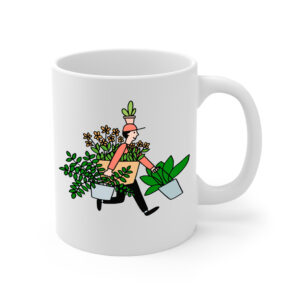Table of contents
Rubber plant

Latin Name: Ficus elastica ‘Robusta’
Category: Ficus
Family: Moraceae
Origin: Cultivar
Climate: Tropical
Growing Zones: 11-10
Care Instructions
The Rubber plant (Ficus elastica ‘Robusta’) is a tropical plant that originates from Cultivar. This ficus plant belongs to the Moraceae family and is well-suited for growing in USDA zones 11-10.
Complete Care Guide for Rubber Plant (Ficus elastica ‘Robusta’)
Watering Requirements
The Rubber Plant, or Ficus elastica ‘Robusta’, thrives with a balanced watering routine. It is essential to allow the top inch of soil to dry out between waterings. Overwatering can lead to root rot, a common issue with this species. During the growing season (spring and summer), water the plant thoroughly, ensuring that excess water drains out of the pot’s bottom. In the fall and winter months, reduce watering frequency as the plant enters a dormant phase. Always check the moisture level by inserting your finger into the soil; if it feels dry, it’s time to water. Additionally, using room temperature water can help prevent shock to the roots.
Light Conditions
Rubber Plants prefer bright, indirect light but can adapt to lower light conditions. Ideally, place your Ficus elastica ‘Robusta’ near a window that receives filtered sunlight. Direct sunlight can scorch the leaves, leading to unsightly brown patches. If the plant is not receiving enough light, you may notice leggy growth and a loss of vibrancy in the leaves. Conversely, too much direct sunlight can cause leaf burn. If you notice the leaves curling or dropping, it may be a sign of inadequate light. Rotate the plant occasionally to ensure even growth and exposure to light.
Soil Preferences
The ideal soil for a Rubber Plant is a well-draining potting mix that retains some moisture without becoming soggy. A blend of potting soil, perlite, and peat moss works well to provide the necessary drainage and aeration. It’s crucial to ensure that the pot has drainage holes to prevent water from accumulating at the bottom. Fertilization should be done during the growing season with a balanced, water-soluble fertilizer every 4-6 weeks. In the fall and winter, reduce or stop fertilization as the plant’s growth slows down. Always follow the manufacturer’s instructions for dilution rates to avoid over-fertilizing, which can harm the plant.
Pests and Diseases
Common pests that may affect the Rubber Plant include spider mites, mealybugs, and scale insects. Regularly inspect the leaves for any signs of infestation, such as webbing or sticky residue. If you notice pests, treat the plant with insecticidal soap or neem oil, ensuring to cover both the tops and undersides of the leaves. Fungal diseases can also occur, particularly if the plant is overwatered or in overly humid conditions. Root rot is a significant concern; if you suspect this, check the roots and trim away any that are black or mushy. Maintaining good air circulation around the plant can help prevent fungal issues.
Special Care Tips
To keep your Rubber Plant healthy and thriving, consider the following special care tips: First, wipe the leaves with a damp cloth regularly to remove dust, which can hinder photosynthesis and reduce the plant’s overall health. Additionally, Rubber Plants can benefit from occasional pruning to encourage bushier growth and remove any dead or damaged leaves. If you notice the plant becoming too tall or leggy, cut back the stems to promote a fuller appearance. Lastly, be mindful of temperature; Rubber Plants prefer temperatures between 60°F and 75°F (15°C to 24°C) and should be protected from drafts and sudden temperature changes. With proper care, your Ficus elastica ‘Robusta’ can grow into a stunning indoor specimen.








